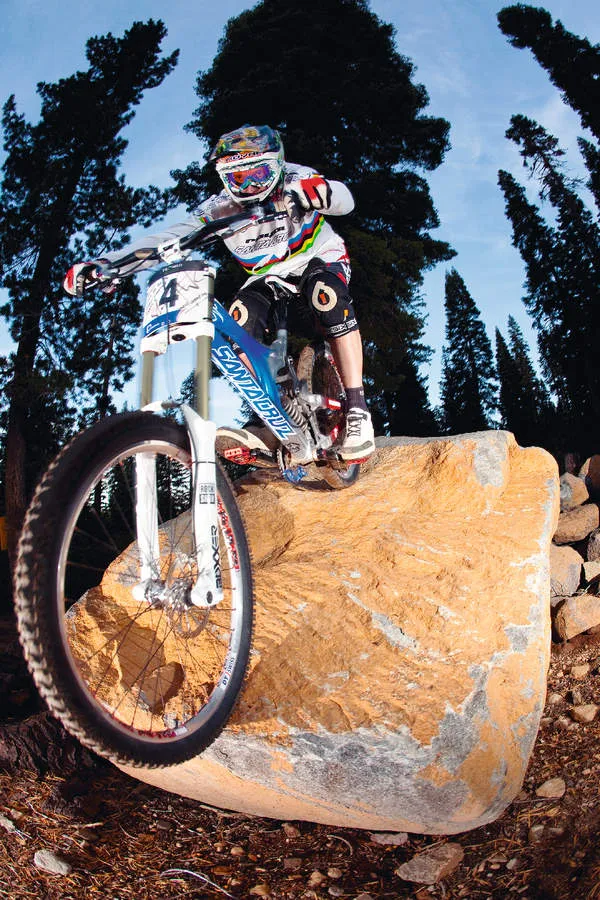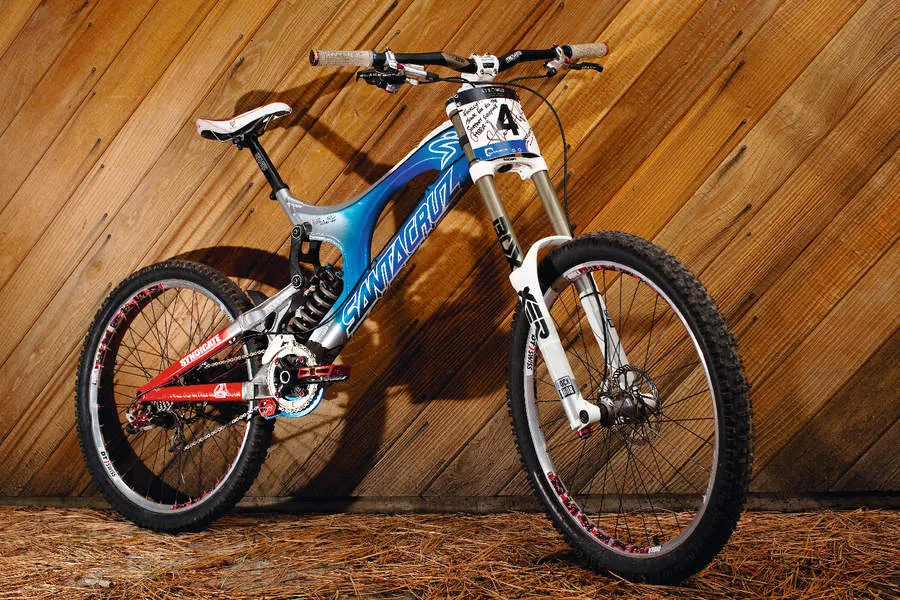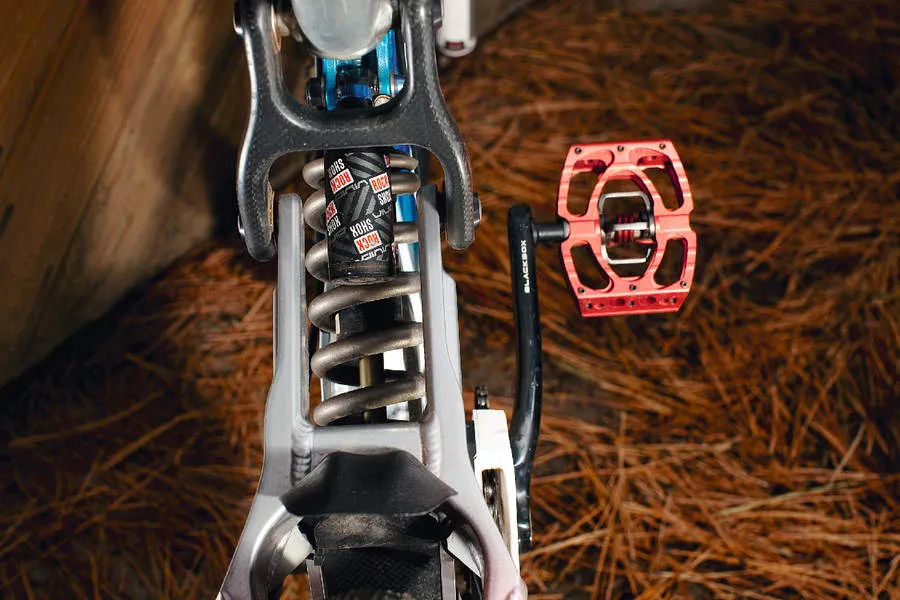On 6 September, British downhill legend Steve Peat achieved his long-awaited dream of winning the World Championships, delighting thousands of fans across the world in the process.
After the celebrations had ended, he gave Mountain Biking UK magazine an exclusive look at the bike that helped him snatch the coveted title – a prototype next generation Santa Cruz V-10. Here's a quick overview; for the full lowdown see issue 246 of MBUK, out now.
V-10.4 for Victory
The V-10 has been around since 2002 and has morphed through three models into the V-10.3 that you can buy today. Peaty's winning bike was one of three V-10.4s handmade for him by Santa Cruz's weld wizard Mike Woods and master machinist Jon Heyliger, both of whom now have rainbow striped workshop aprons!
Steve is 6ft 4in tall, so some custom geometry was in order for the lofty Yorkshireman. The bike has an effective top tube length of 657.8mm (25.9in), which led to its nickname, ‘The Horse’. Peaty’s proto also has a larger 1.5in head tube, which can house offset cups to slacken or steepen the head angle by one degree.
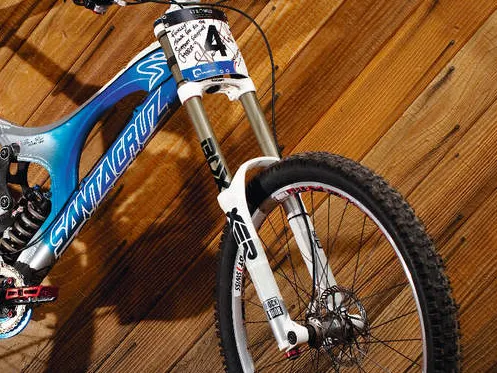
The next focus was the rear suspension. A longer stroke shock was required to cope with the workout it was getting underneath the Peatmeister at full chat on a World Cup course. The shock length went up from 222mm (8.75in) with a 70mm (2.75in) stroke, to 240mm (9.5in) with a 76mm (3in) stroke.
This allowed a spring weight drop of 50lb and gave SRAM technicians more tuning options. To allow for the long shock, they had to make a resized lower link. The only frame modification for the race was a patriotic powdercoated paintjob which took three hours of toil, all done in-house at Santa Cruz.
To get the most out of the bike on the relatively flat Canberra World Championship track, it needed to be as light as possible, be super-efficient on the gas and have the lowest possible rolling resistance.
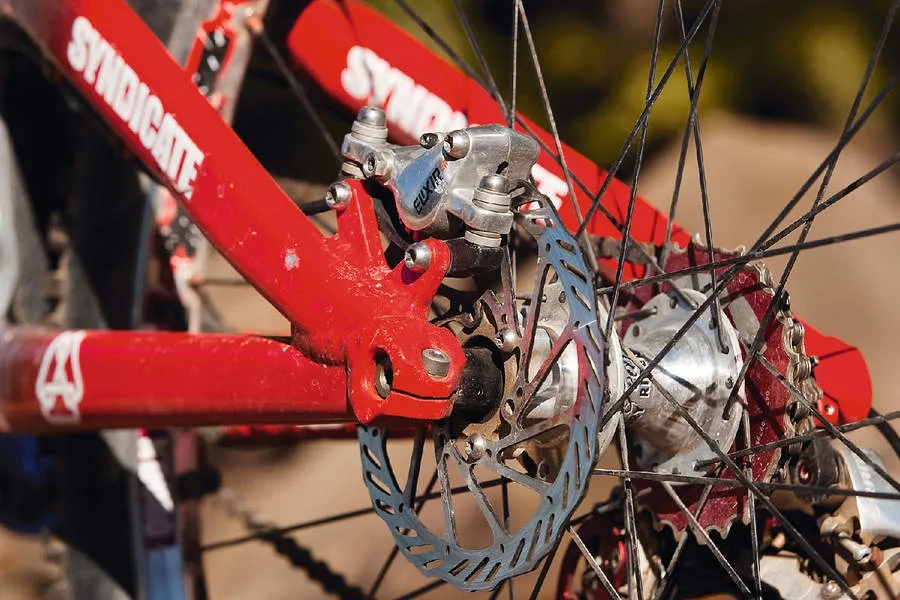
Steve’s mechanic, Rick ‘Ricky Bobby’ Clarkson, went to town on the DT Swiss EX1750 wheels, replacing the spokes, stripping the rims and hubs of paint, swapping grease for light oil and leaving out all the seals and dust shields, to reduce friction. They were so much faster that Steve had to change entry speeds and braking points to compensate!
Nearly every steel nut and bolt was replaced with titanium or aluminium, tiny brake rotors were used and tyres and tubes worthy of a cross-country bike were fitted. All this added up to a super-fast-rolling bike that tipped the scales at just 16.7kg (36.9lb).
